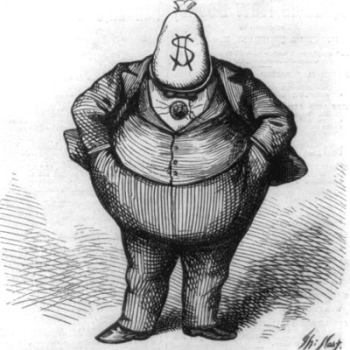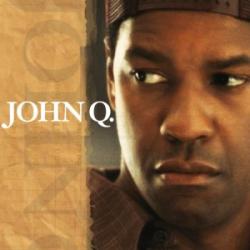“There are pestilences and there are victims, and it’s up to us, so far as possible, not to join forces with the pestilences.”
It’s the end of the month, so if you still have a few free New Yorker articles to read online, let me recommend Margaret Talbot’s remarkable, engrossing report, “The Addicts Next Door.” It’s a long, heart-breaking look at the opioid crisis ravaging Martinsburg, West Virginia. It’s from June of last year, but it’s not out of date. Nor is what Talbot describes in this one city confined to this one community, or to this one state.
The public policy response needed here is multi-pronged and massive. Narcan. A vast increase in the number of affordable and effective rehab centers. Needle exchanges. Clinics. Hamsterdam, maybe. There’s also a spiritual response, hinted at by one of Talbot’s many interview subjects:
[Michael] Chalmers, who is forty-two, grew up in Martinsburg, and in 2014 he lost his younger brother, Jason, to an overdose. I asked him why he thought that Martinsburg was struggling so much with drugs. “In my opinion, the desperation in the Panhandle, and places like it, is a social vacancy,” he said. “People don’t feel they have a purpose.” There was a “shame element in small-town culture.” Many drug addicts, he explained, are “trying to escape the reality that this place doesn’t give them anything.” He added, “That’s really hard to live with — when you look around and you see that seven out of ten of your friends from high school are still here, and nobody makes more than thirty-six thousand a year, and everybody’s just bitching about bills and watching these crazy shows on reality TV and not doing anything.”
Chalmers is suggesting something like the opposite of Springsteen’s lyric: At the end of every hard-earned day people can’t find any reason to believe.
A reason to believe — a sense of purpose and meaning beyond just “watching these crazy shows on reality TV and not doing anything” — is supposed to be a big part of the church’s reason to exist. So where are the churches in Talbot’s portrait of Martinsburg’s crisis? Absent and irrelevant. Just exactly as absent and irrelevant as that crisis seems to be from those churches.
And there are plenty of them in Martinsburg, even if only one — a nameless “storefront church” in a nearby town that hosted a meeting — enters into Talbot’s story or is mentioned by any of the many people she profiles and interviews.

I spent a couple of hours yesterday browsing the websites of every church on that map that had one. They seem nice (mostly). Several of those churches support CCAP/Loaves & Fishes, a laudable countywide food pantry and referral ministry. Others are involved in the kinds of admirable social outreach ministries one might find in similar churches elsewhere in America — CROP walks, day care, Habitat for Humanity, St. Vincent societies, etc. A handful make their facilities available for weekly Narcotics Anonymous meetings (Destiny Baptist hosts five a week).
Granted, local churches tend to be terrible at creating and maintaining websites. It’s entirely possible that some of these churches, then, might be responding to the crisis described by Margaret Talbot. Maybe some of those churches are doing that and they just haven’t gotten around to updating their websites to reflect it. Maybe.
But browsing through all of those church websites after reading “The Addicts Next Door” it seemed none of them existed in the same city or community that Talbot was reporting on. The world described by Talbot — and by Michael Barrett, by Andrew Garcia, by Lori Swadley, by the women of the “Hope Dealers,” by Dr. Aldis and all of the other doctors, nurses, EMTs, and all of the other community leaders cited in Talbot’s article — seems far-removed from, untouched and unnoticed by,* and unconnected to, the many churches serving Martinsburg.
It seems impossible that that world is also completely unconnected to the lives of the people in the congregations of those churches. Talbot writes:
West Virginia has an overdose death rate of 41.5 per hundred thousand people. (New Hampshire has the second-highest rate: 34.3 per hundred thousand.) This year, for the sixth straight year, West Virginia’s indigent burial fund, which helps families who can’t afford a funeral pay for one, ran out of money. Fred Kitchen, the president of the West Virginia Funeral Directors Association, told me that, in the funeral business, “we know the reason for that was the increase in overdose deaths.”
Someone is performing all of those funerals. But, as Martinsburg resident Lori Swadley tells Talbot:
The funerals had a peculiar aspect. “The parents didn’t want anyone to know how it had happened, and they tried to keep the friends out,” she said. At the services for one friend — a sweet, goofy guy with shaggy blond hair — Swadley and her friends got close enough to the casket to see that his hair had been shorn, so that “he looked clean-cut.”
If what Michael Chalmers describes as a “social vacancy” fueling the addiction crisis is real, then Martinsburg’s churches seem mostly impotent to address it. At the end of every hard earned day, they do not seem to have helped people in their city to find some reason to believe.
If such a problem is connected to the crisis, then I think the response to it involves something that Talbot herself hints at, albeit subtly. Michael Chalmers, remember, describes the crisis as arising in part from a sense of meaninglessness — from a community that seems to offer nothing more than the possibility of “bitching about bills and watching these crazy shows on reality TV and not doing anything.”
The italics there are original, as are the italics in this quote from another Michael. Near the very beginning of Talbot’s piece, she rides along with local EMT Michael Barrett, accompanying him as he responds to four overdoses during a single shift. She describes how Barrett chose his profession:
Barrett’s father and his uncles were volunteer firemen in the area, and, growing up, he often accompanied them in the fire truck. As they’d pull people from crumpled cars or burning buildings, he’d say to himself, “Man, they doing stuff — they’re awesome.”
Ah. “They doing stuff.” The opposite of Chalmers’ “not doing anything.”
Here, then, is a potential source of meaning and purpose: Doing stuff. Not just pulling people from crumpled cars and burning buildings, but from the slow motion emergency of epidemic addiction. “There are sick people, and they need curing.” There is stuff to do, stuff that needs to be done. That is, as Barrett says, awesome. It is hard-earned, but it is also reason to believe.
– – – – – – – – – – – –
* The only explicit acknowledgement of this crisis was from an off-site link from the Second Baptist Church’s site, linking to a news release from the West Virginia Conference of Southern Baptists from last November: “W.Va. Southern Baptists Increase CP Giving and Take on Statewide Drug Abuse.” Take on seems to mean study how they might eventually go about taking on, or reframe what we’re already doing as taking it on. But still, better than nothing.












